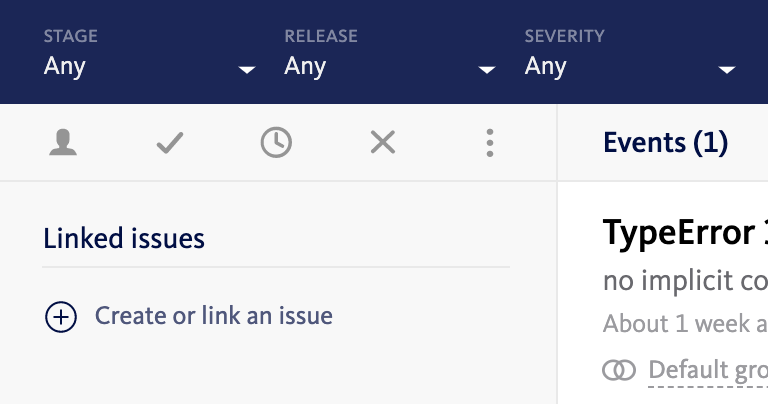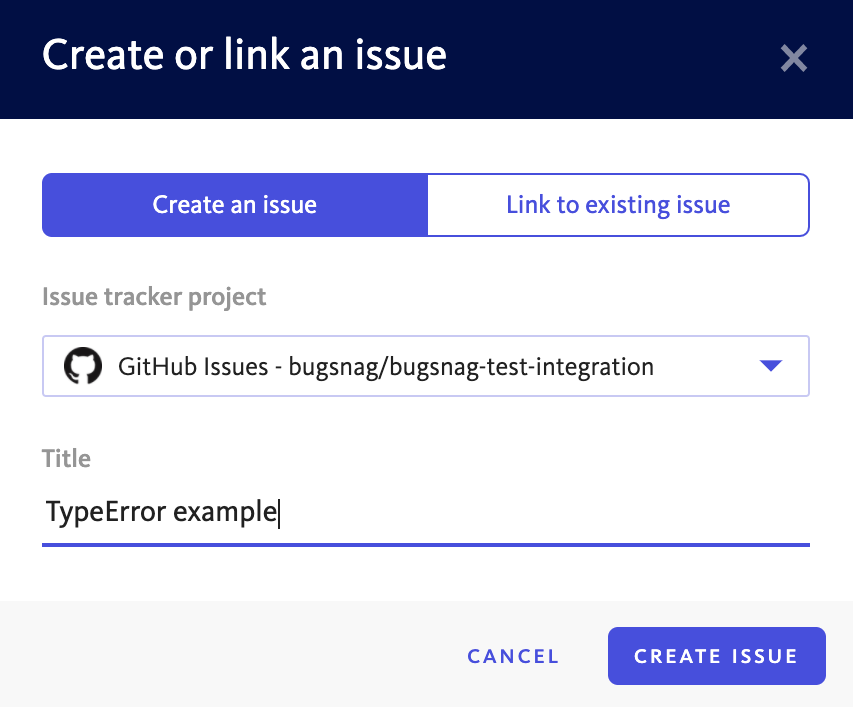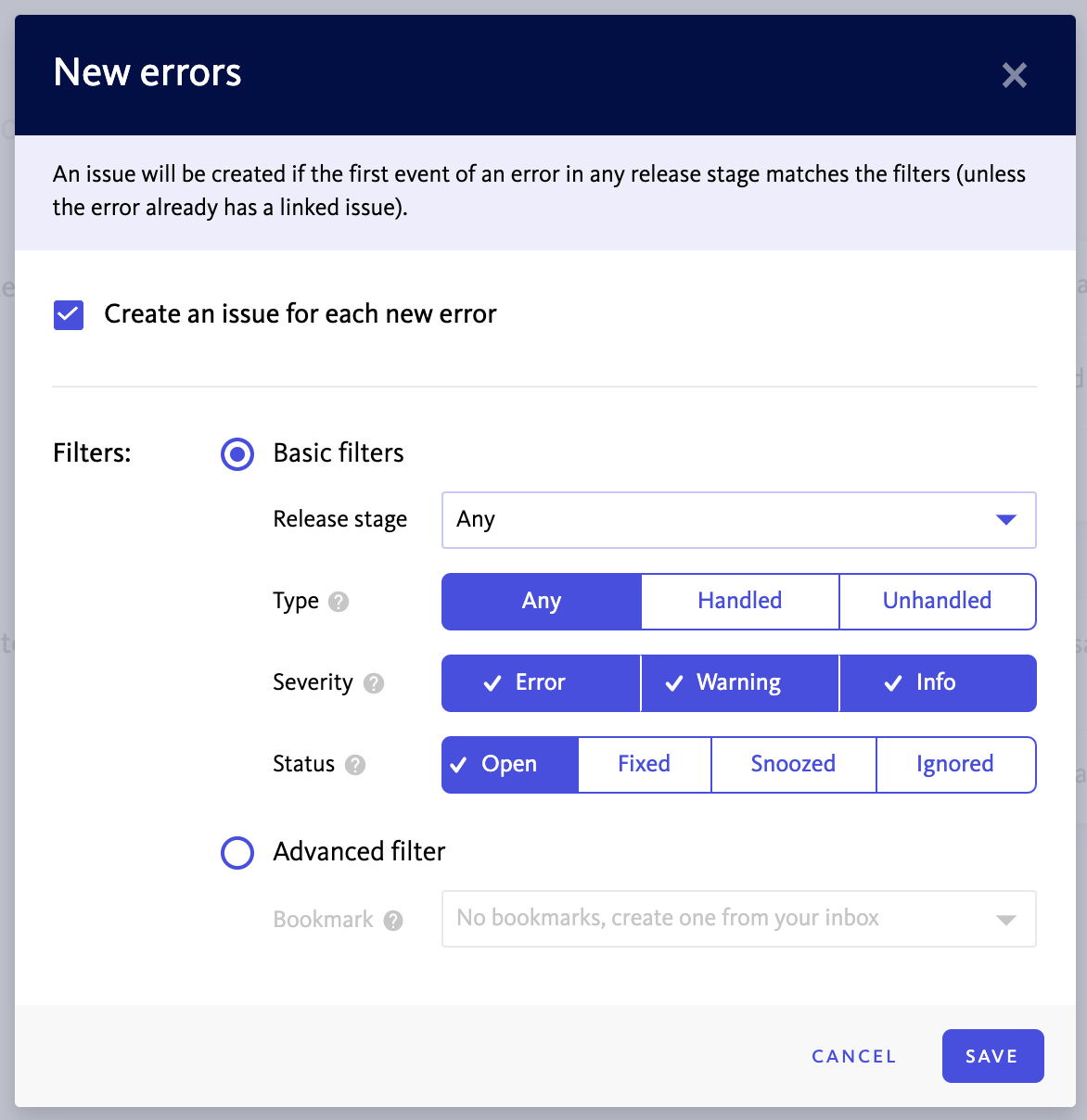GitHub Issues
Learn how to setup a BugSnag integration with GitHub Issues.
The GitHub Issues integration allows an issue to be created in GitHub for errors that are reported to BugSnag.
Configuration
In BugSnag, set up the GitHub Issues integration from Project Settings > Issue tracker, then select GitHub Issues from the Available integrations section.
Multiple GitHub Issues integrations can be configured for BugSnag projects which allows different issues to be created in different repositories. Contact us to gain access to this feature.
Creating issues
Issues can be created manually or automatically. Once an error has a linked issue, a comment will be added to the issue when the error changes between open and fixed, and when a comment is added to the error in BugSnag.
Manual issue creation
Create an issue manually by clicking on the + icon on the BugSnag dashboard.

With the Create an issue toggle selected, create a new linked issue by selecting the issue tracker from the dropdown and selecting the Create issue button.

Alternatively, select Link to existing issue to add an issue using the URL.
Automatic issue creation
You can choose one of two ways allow BugSnag to automatically create an issue.
- Create an issue for each new error: Create a linked issue as soon as a new error is seen.
- Create an issue when a threshold is reached: Create a linked issue only when a certain number of events are seen in specific time interval. For example, 100 events in 1 hour.
Filters can be configured to define which errors should automatically create an issue in GitHub Issues. An issue will be created the first time an error occurs in a matching release stage, if there is no existing issue.

Basic filters
Basic filtering is provided for severity, type, and release stage.
- Filter by release stage: Select the release stage(s) that you want issues to be created for from the Release stage dropdown.
- Filter by type: Create issues for either handled or unhandled errors only. Find out more >
- Filter by severity: Create issues for certain severities by selecting severity option(s).
- Filter by status: Select the status option(s) that you want to include in your filter from the Status toggle.
Advanced filters
Advanced filtering leverages saved filtersets to enable you to create issues based on any field you can filter on using the filter bar. Advanced filtering is available on Preferred and Enterprise plans.
Two-way sync
The GitHub Issues integration has two way sync capabilities which means that errors in BugSnag can be kept in sync with the linked issue in GitHub.
To enable two-way sync select Two-way sync and enable the automations you require.

Labels
You can configure BugSnag to automatically apply labels to issues created by the integration.
This is setup by providing a comma separated list of labels to apply to all new issues.
Access token permissions
The access token used to configure the integration requires the following permissions:
Classic tokens
repo(for private repos)repo_public(for public repos)admin:repo_hook(for two-way sync)
Fine-grained tokens
Read and write access for:
- Issues
- Webhooks
Access through firewall
If your server’s security policy denies access from external IP addresses and websites, you will need to allow access to the following IP addresses:
- 104.196.245.109
- 104.196.254.247
- 107.23.160.224
- 34.231.155.113
- 34.235.33.231
- 52.207.146.211
- 52.55.78.127
Or if you are using On-premise, you will need to allow access to the address specified in Remote proxy URL in the Replicated KOTS admin console.